The Metropolitan Police Department Shoulder Patch

The visible symbols of a police department are its badge and shoulder patch.
The badge of the Metropolitan Police Department is over 160 years old and has changed extraordinarily little since it was pinned on to the first officer. The shoulder patch has a history which is about one hundred years shorter.
The history of the departmental shoulder patch may not yet be lost but you could say that it’s been misplaced and may never be recovered.

Former Chief of Police Maurice T. Turner [July 1981- July 1989] at some point in his tenure authorized the release of a souvenir type brochure entitled “METROPOLITAN POLICE DEPARTMENT SHOULDER PATCH”.
In that brochure it states that the Metropolitan Police Department designed the shoulder patch in 1970. Was that an accurate date?
Looking back at our history through photographs and news stories we can begin to fill in the blank spaces about the department shoulder patch.
During the nineteenth century, when the department was founded, police shoulder patches were not commonly utilized. As the department moved into the twentieth century, police uniforms began to change as well as the use of police patches.
Let’s explore how the department went from clean sleeves to a left sleeve shoulder patch, to different patches on each sleeve to the same patch on each sleeve.

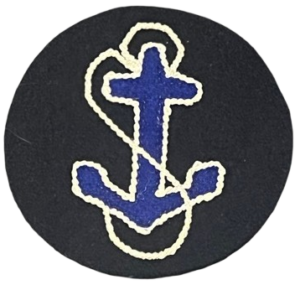

Officers on bicycles, known as wheelmen, began to differentiate themselves from other officers with distinctive patches, along with some harbor officers. In 1912, the Metropolitan Police Department transitioned from horses to motorcycles as their primary mode of transportation with sidecars being introduced in 1932. With the adoption of motorcycles, the distinguished winged wheel shoulder patch became associated and widely recognized with motor officers.




During the 1930s, patches began appearing above the cuffs of officers’ blouses to denote shooting proficiency and were often referred to as shooting ribbons. Additionally, American Red Cross patches appeared on the sleeve to indicate medical training in first aid, as well as a red star patch whose symbolism remains unidentified. Furthermore, specialized disciplines such as departmental shooting teams and motorcycle demonstration teams began to be represented by shoulder patches. However, these shoulder patches were not worn during patrol duties.






The earliest known departmental patch appeared in the 1940’s which was the M.P.D.C. letters against a blue shield background. This was not a shoulder patch but rather a patch worn on departmental cardigan sweaters.

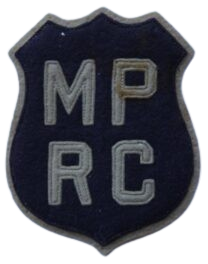


A shoulder patch design resembling the current official departmental patch first appeared in 1949 for Harry S. Truman and Alben W. Barley’s inauguration. An Evening Star article dated January 14, 1949, noted that one hundred of these special patches were issued to the motormen of the Metropolitan Police Department for use during the event. These patches continued to be worn afterward, and they undoubtedly influenced the current patch design.
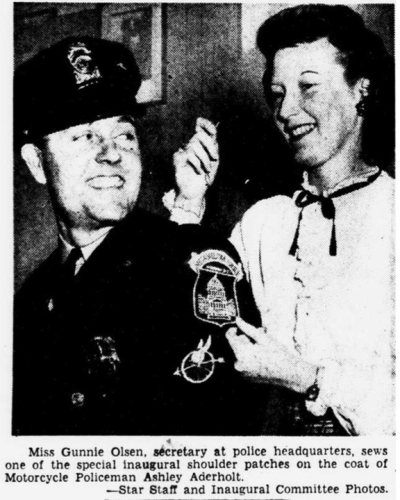

In the 1960s, motormen started wearing a second style of shoulder patch. Legend says that the first was the ‘crooked cane’ patch with a halo above Columbia. A second prototype with red and yellow highlights was made but never used. Finally, a cleaner version was created and used.


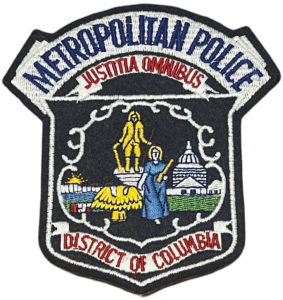
The historical riddle is, when did these patches first appear?
In photos from John F. Kennedy’s 1961 inauguration, a patch can be observed on the left sleeve of the escort motormen above the winged wheel.
The specific details of this patch, whether it is the 1949 Motorman Inaugural patch or a new style, are not conclusively identified.
A 1963 photograph of President Lyndon Johnson with his Park Police and Metropolitan Police Department motor escort is the first time the new shoulder patch clearly visible.
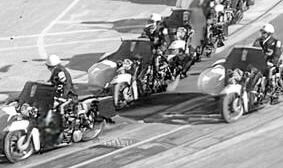


1963 photograph of President Lyndon Johnson with his Park Police and Metropolitan Police Department motor escort.


An undated photo shows Vice President Hubert Humphrey (1965–1969) inspecting Metropolitan Police Department motormen.
1964 brought about the use of patches for K-9 handlers and 1969 brought about a C.D.U. patch which was worn on the left breast of the cover-all style uniform.
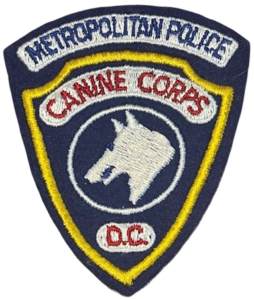

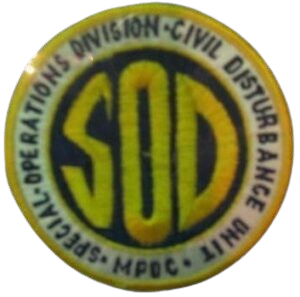
While not conclusive, it is likely that the second predecessor to the departmental shoulder patch dates to 1961. During the political unrest of the 1970s in Washington, D.C., the patch began appearing in other units of the Special Operations Division (SOD), particularly during the May Day protests from May 1 to May 5, 1971. This indicates that the patch was not limited to motor units.





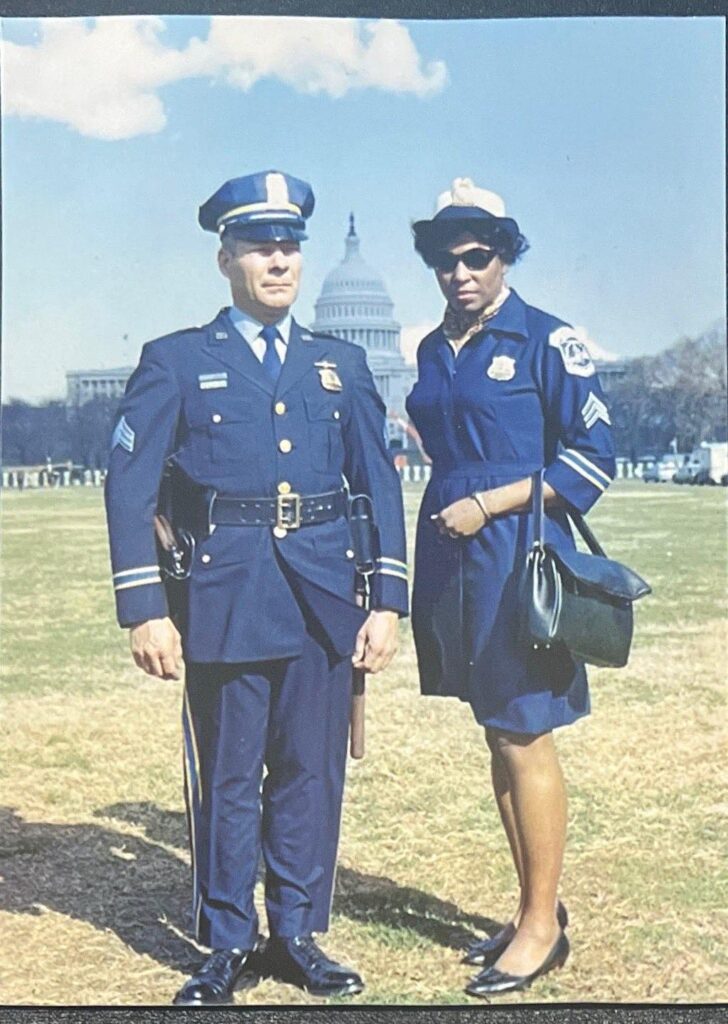
The April 9, 1970, edition of the Evening Star reported that the Metropolitan Police Department planned to change the look and style of their uniforms beginning that summer. The proposed new style included the use of a shoulder patch intended to complete the uniform’s appearance. Photographs of officers wearing the new uniforms displayed this type of shoulder patch. Although the new uniforms were never implemented, the concept of having a department shoulder patch on the left sleeve was introduced.

In 1972, we can also see the adoption of the half-circle Metropolitan Police patch attached to caps as well as the left sleeve.



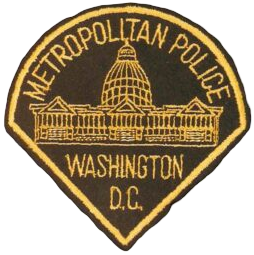
The shoulder patch design currently in use was first introduced during the 1973 inauguration of Richard Nixon. Consistent with the tradition of motor units, the uniform featured a single patch worn on the left sleeve.

In 2000, former Chief Charles Ramsey implemented a modification to the departmental uniform by introducing the American Experience patch, also known as the flag patch, on the right shoulder. This change was evidently influenced by Chief Ramsey’s previous experience with the Chicago Police Department, where officers wear the department’s patch on their left shoulder and the city of Chicago flag patch on their right shoulder.

Under current departmental guidelines, the American Experience patch has been retired, and the current shoulder patch is worn on both the left and right sleeve of the uniform.
